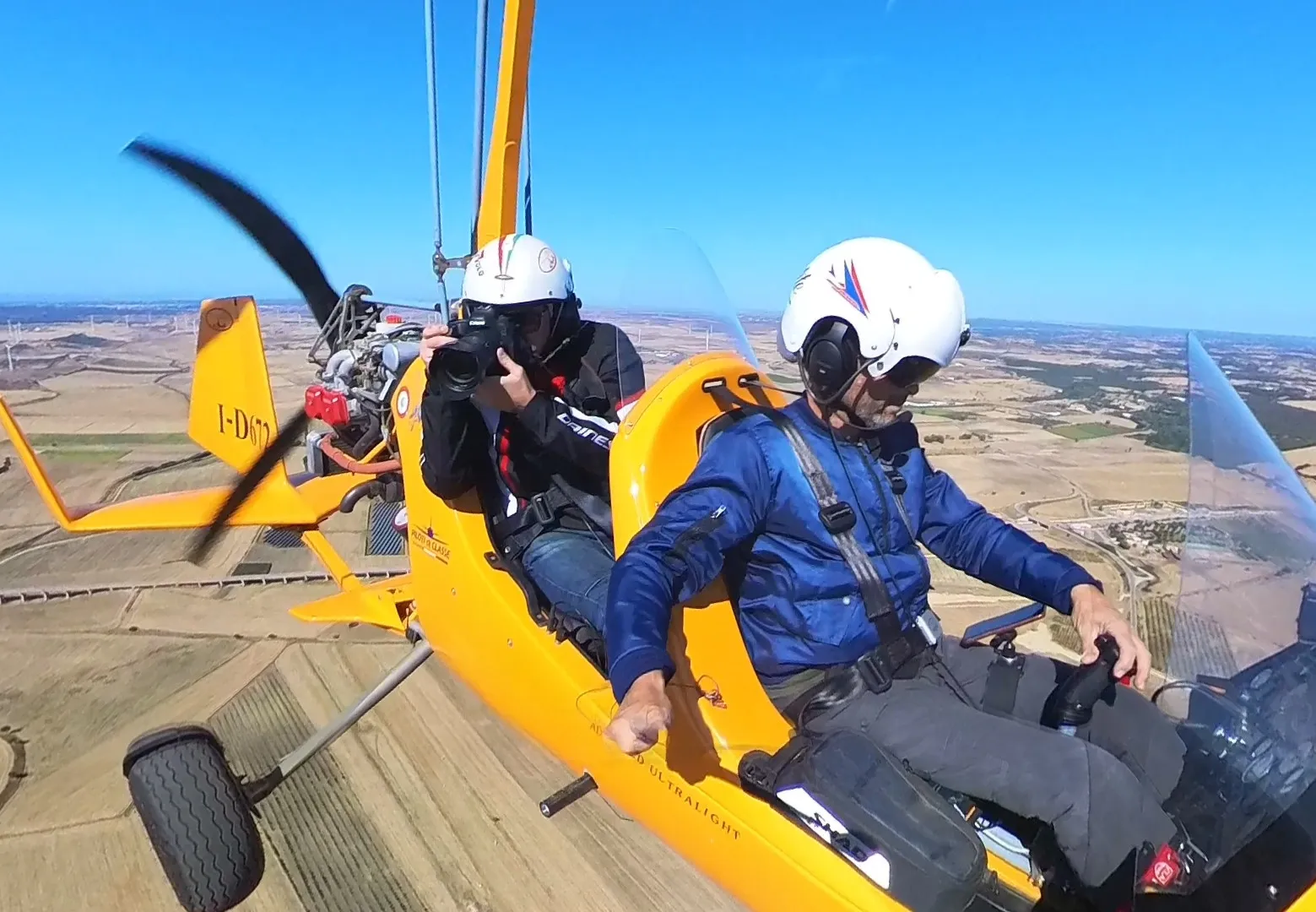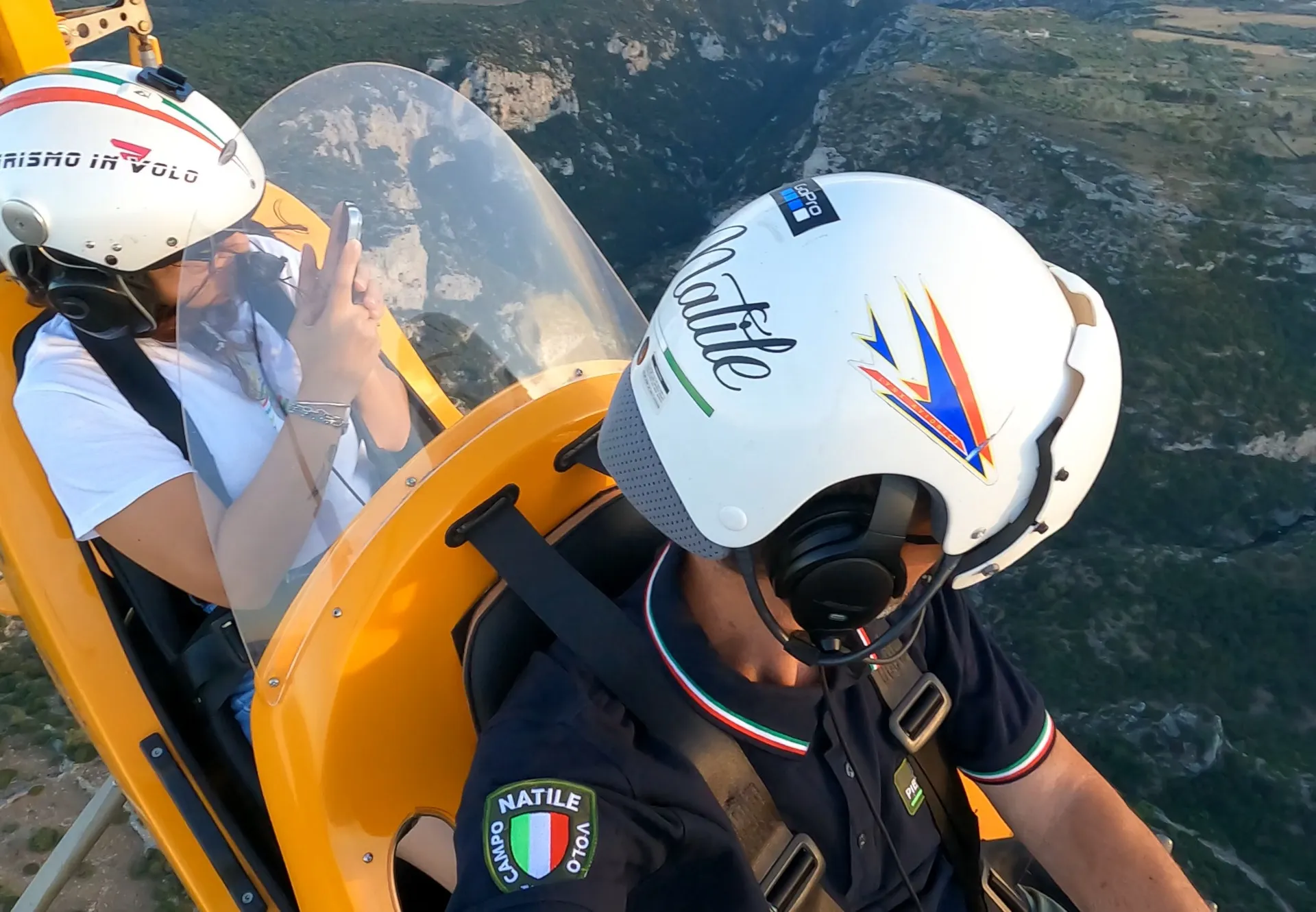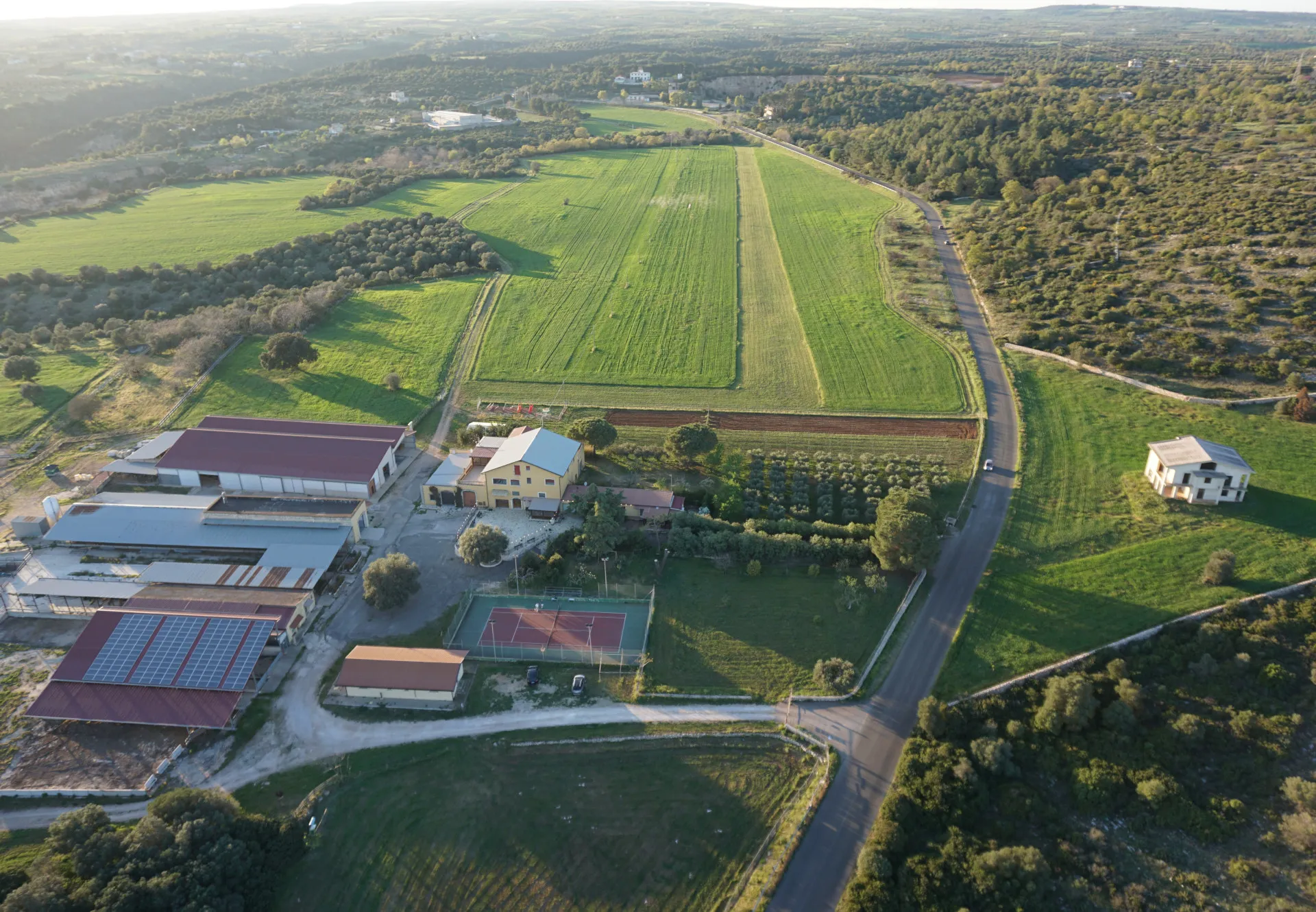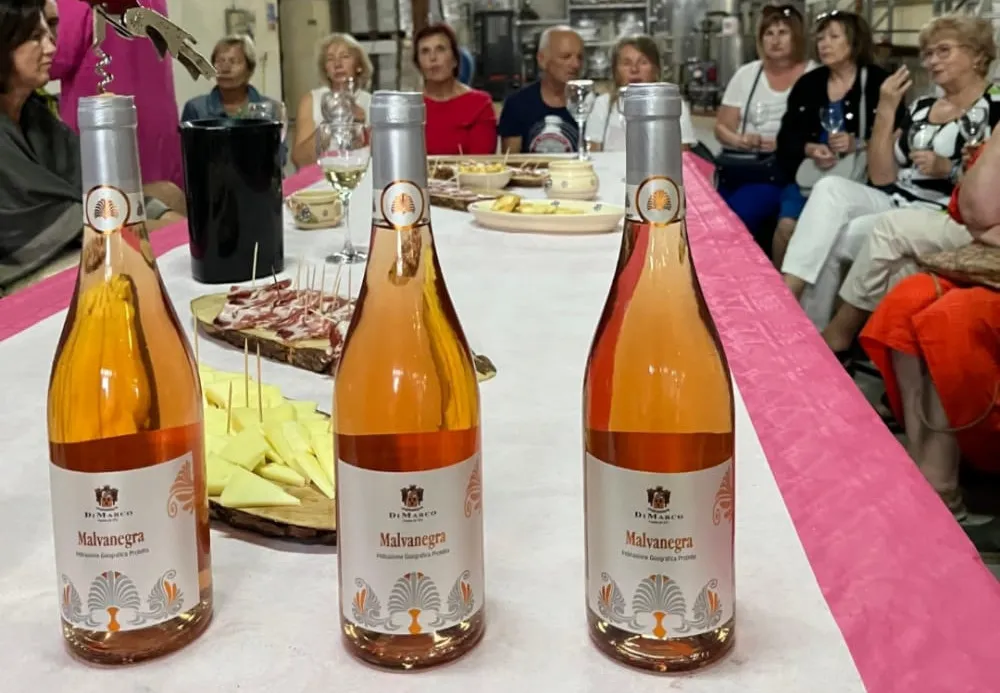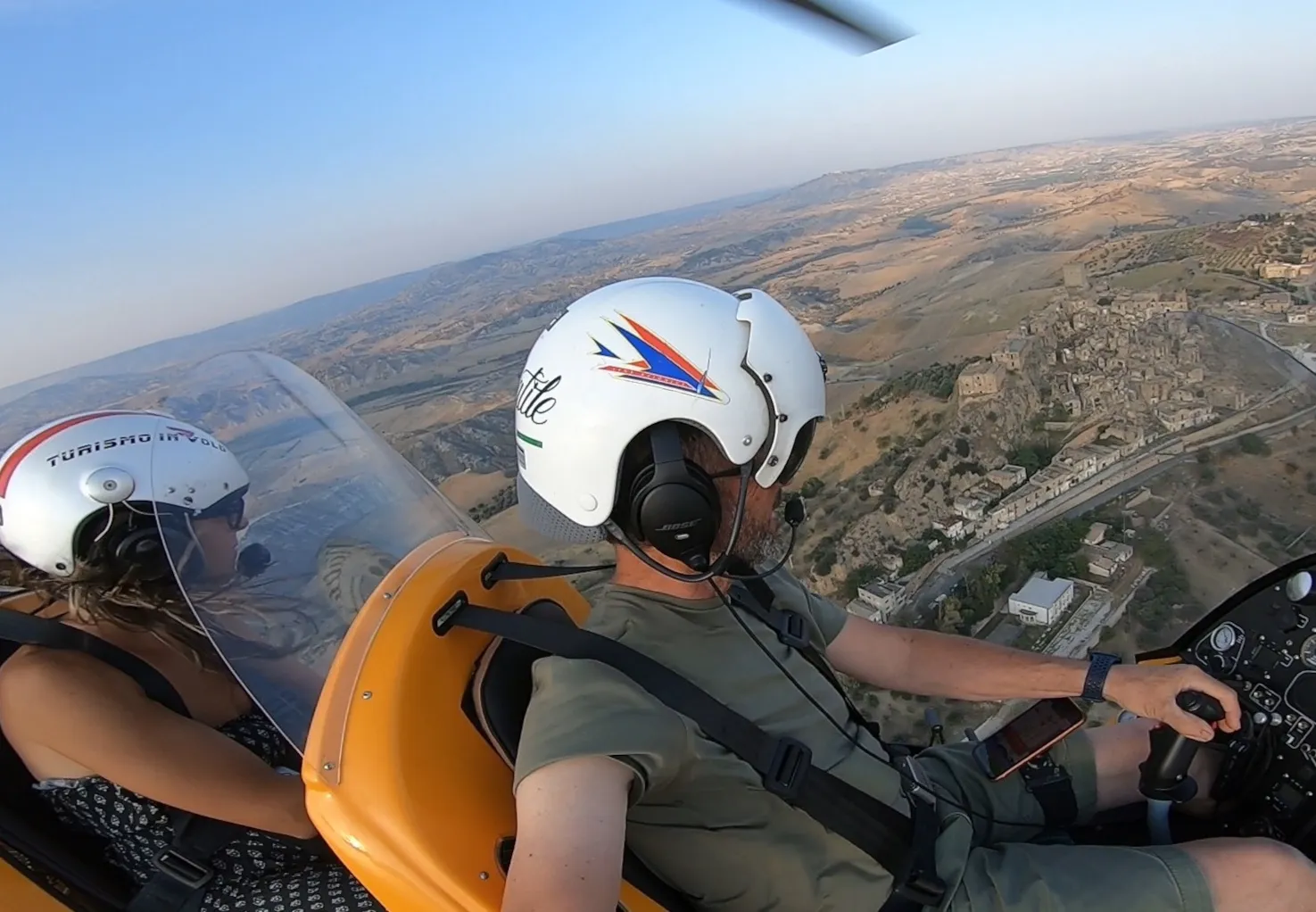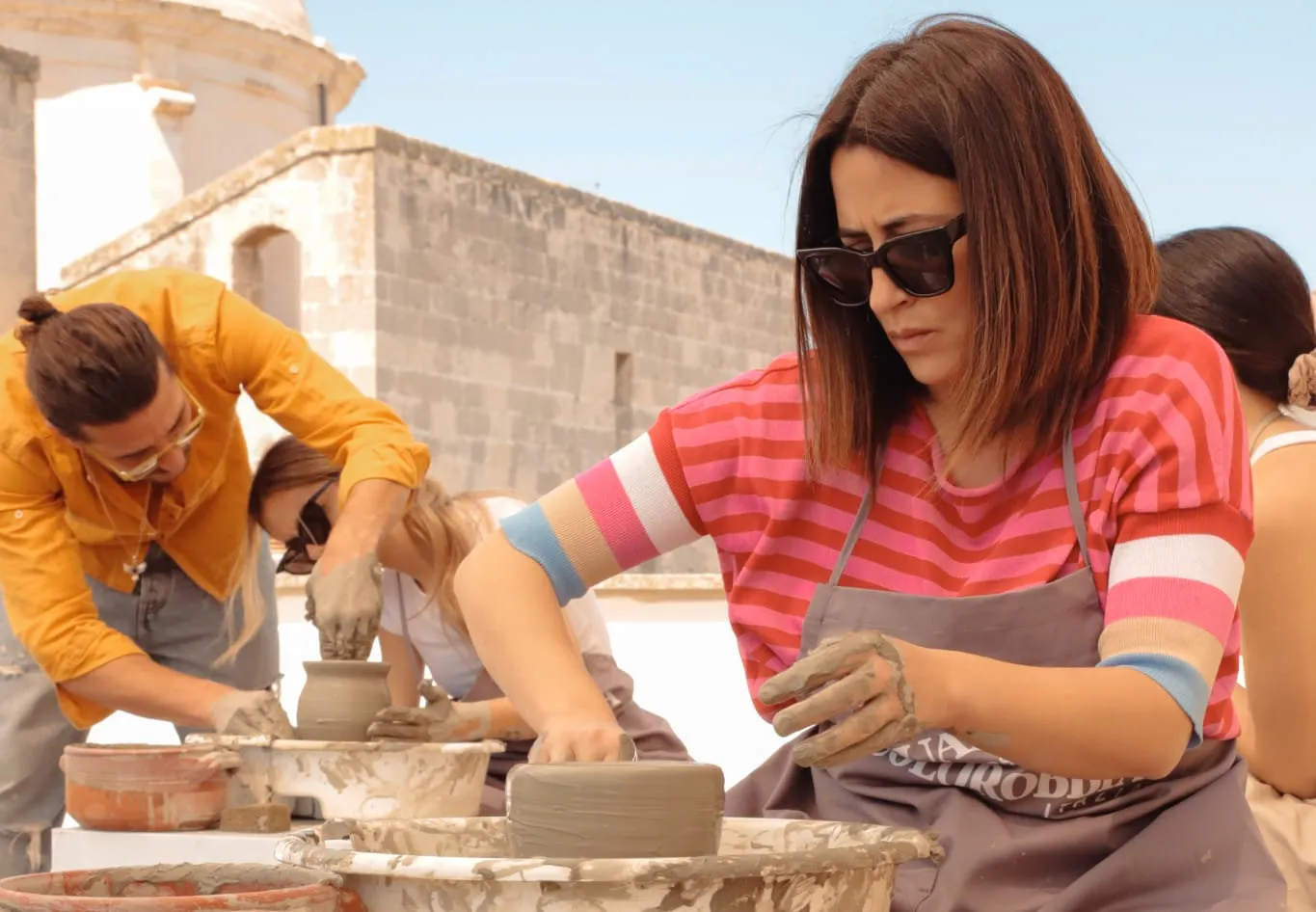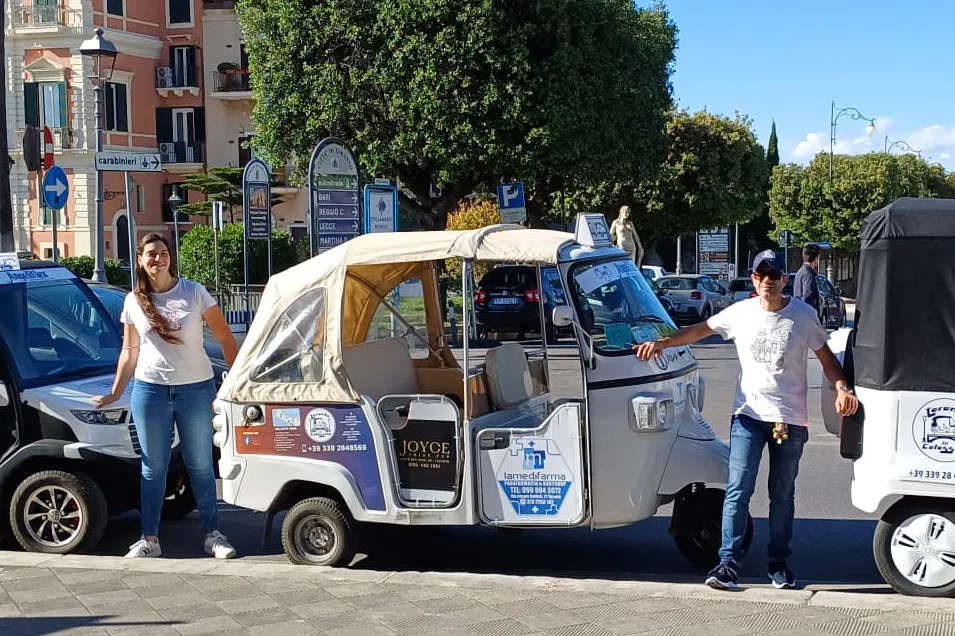Martina Franca, what to see and do
Updated at: 01-12-2024
How this content can help you:
Sure, here is the translation:- You will discover the attractions of Martina Franca, such as the Basilica of San Martino and the Ducal Palace.
- You will get to know the historic churches and local museums.
- You will explore the gastronomic traditions, such as capocollo and bombette.
- You will learn about local events, like the Festival della Valle d'Itria.
- You will discover the artisanal traditions and places to visit in the surroundings.
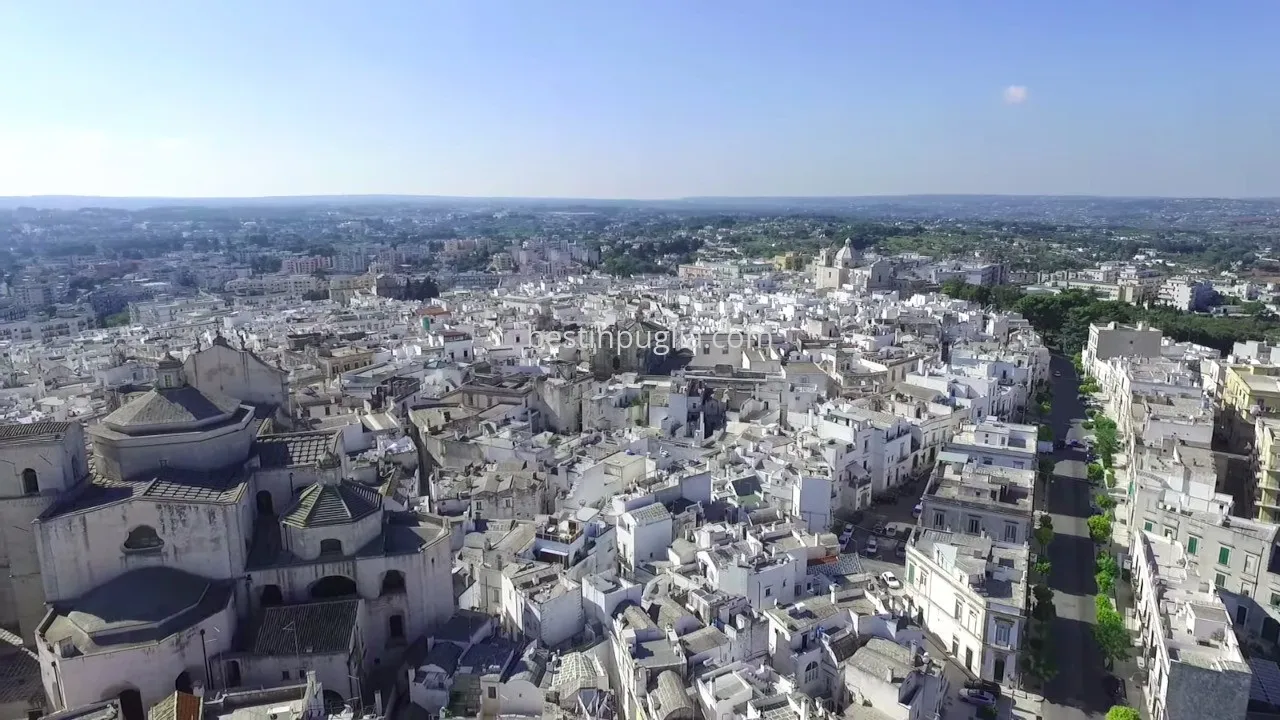
Martina Franca, a town in the province of Taranto with about 47,000 inhabitants, is renowned for its splendid baroque architecture. Located on hills marking the border between the provinces of Taranto and Brindisi, at an altitude of 400 meters above sea level, Martina Franca has historically played an important role as an agricultural, industrial, and commercial center.
Situated in the heart of the picturesque Valle d'Itria, Martina Franca is a perfect example of the cultural, historical, and gastronomic roots that make Puglia famous worldwide.
Thanks to its strategic location, Martina Franca is halfway between the Adriatic and Ionian Seas, allowing visitors to easily move between the attractions and beautiful beaches on both coasts of Puglia.
Martina Franca what to see
The ancient village of Martina Franca is a real pearl for art and history lovers, and offers many things to see.
The beautiful streets of the historic center reveal much of Martina Franca's ancient past.
In addition to the historic buildings, the center is distinguished by the presence of historic churches of great artistic and spiritual value.
The best things to see in Martina Franca are:
- Basilica of San Martino
- Palazzo Ducale
- Church of the Beata Vergine del Carmine
- Church of Sant'Antonio da Padova
- Church of San Vito
- Palazzo Turnone
- Pianelle Park Museum
- Museum of the Basilica of San Martino - MuBa
- Philip I of Anjou Museum
- Cave of Monte Fellone
- Municipal Villa
What to do nearby
Basilica of San Martino
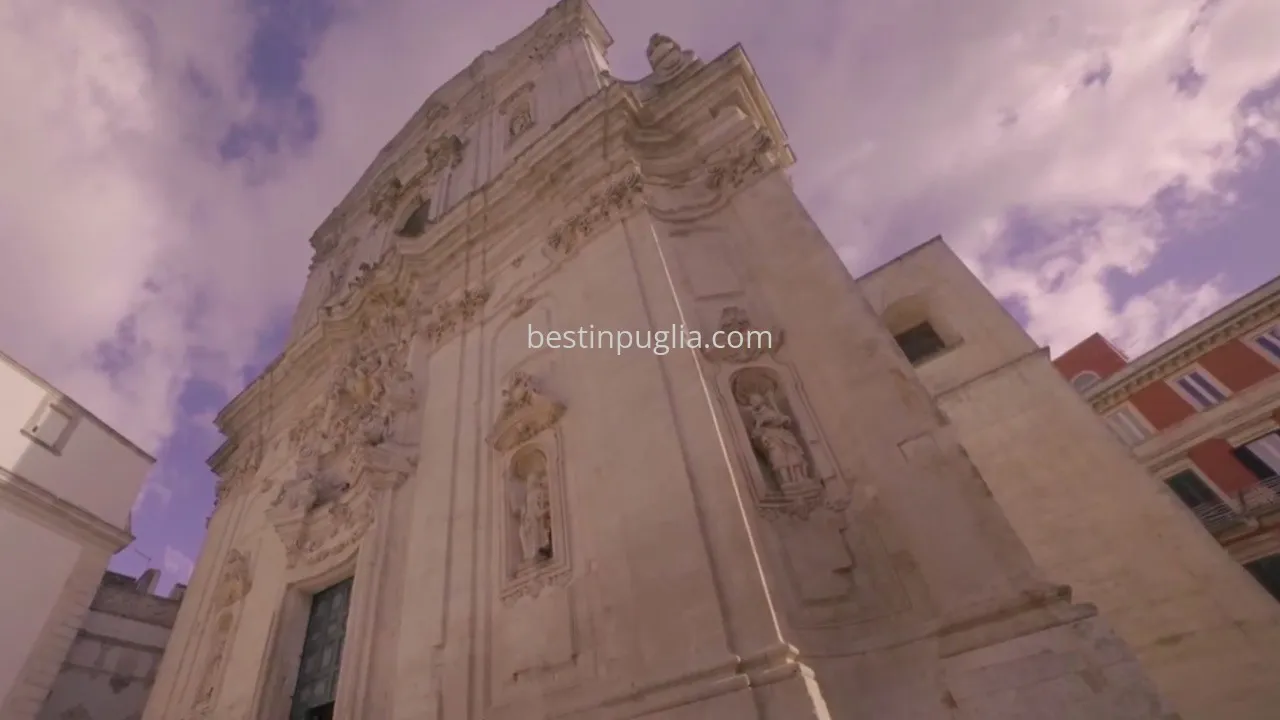
The Basilica of San Martino is the greatest expression of the marvelous Baroque style of Martina Franca.
The building was erected in the second half of the 18th century on the will of the archpriest Isidoro Chirulli.
The facade, adorned with the statue of the patron saint, fascinates with its grandeur and suggestiveness. The white marbles and statues give the facade a distinctive touch. You will be able to see a scene in which the saint shares his cloak with a beggar, depicting piety and brotherhood.
The interior of the church is a veritable treasure trove of artistic treasures, enriched with works by talented local artists. Among the many masterpieces you will see paintings by Carella and the nativity scene created by Stefano da Putignano.
The Basilica of San Martino contains the precious relics of the martyr Santa Comasia. The relics give the church a reputation for beauty unparalleled in the south.
Palazzo Ducale
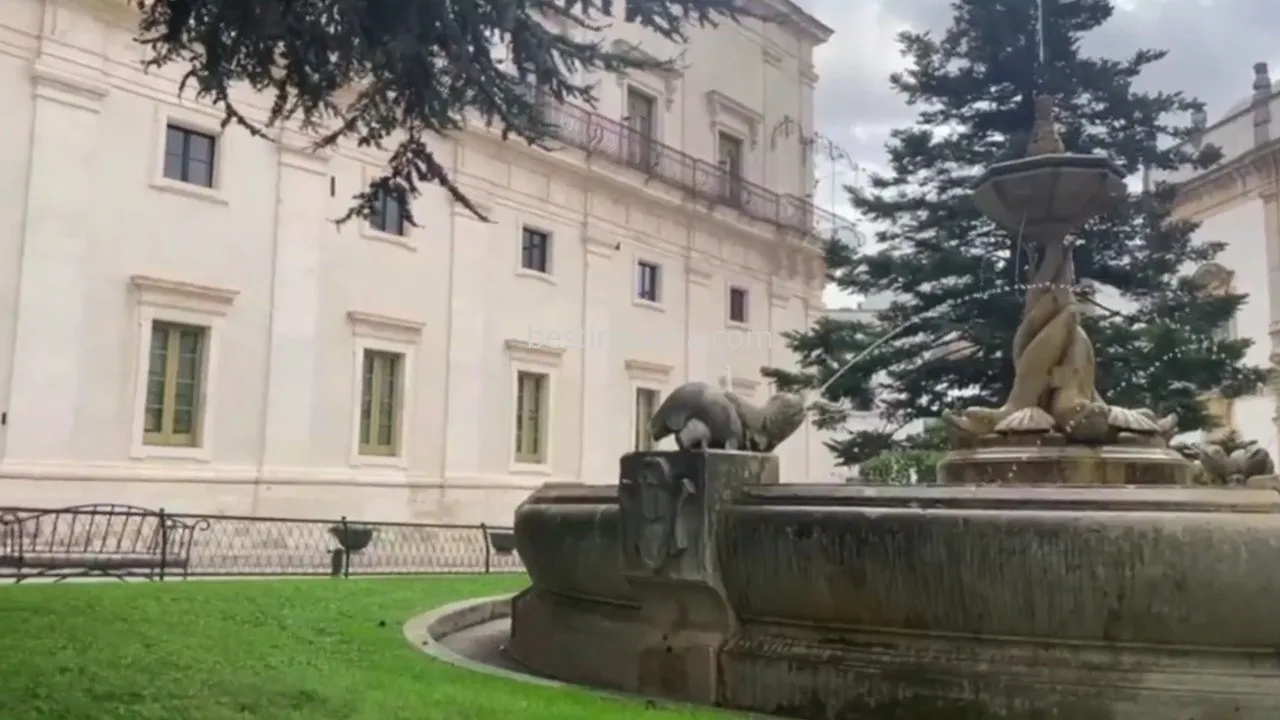
Walking through the historic center you will come across Piazza Roma, where the famous Palazzo Ducale stands out.
The Palazzo Ducale is an imposing structure dating back to the second half of the 17th century. The Palazzo Ducale was commissioned by the eighth Duke of Martina, Petracone V Caracciolo. The Palace was built on the remains of the ancient castle of Raimondello del Balzo Orsini, dating back to 1338.
The facade of the Doge's Palace is an example of refined Baroque style. The interior is enriched by a large staircase that leads to a Baroque portal, which leads to the precious halls of the Palace
The most evocative rooms of the building are the Chapel of the Dukes, the Arcadia Room, the Myth Room and the Bible Room. Each room has its own atmosphere with highly valuable works of art.
Inside the Palazzo Ducale of Martina Franca you can admire works of art from different eras. In particular, you will discover the temperas distributed in the three thematic rooms: Arcadia, Myth and the Bible.
Church of the Beata Vergine del Carmine
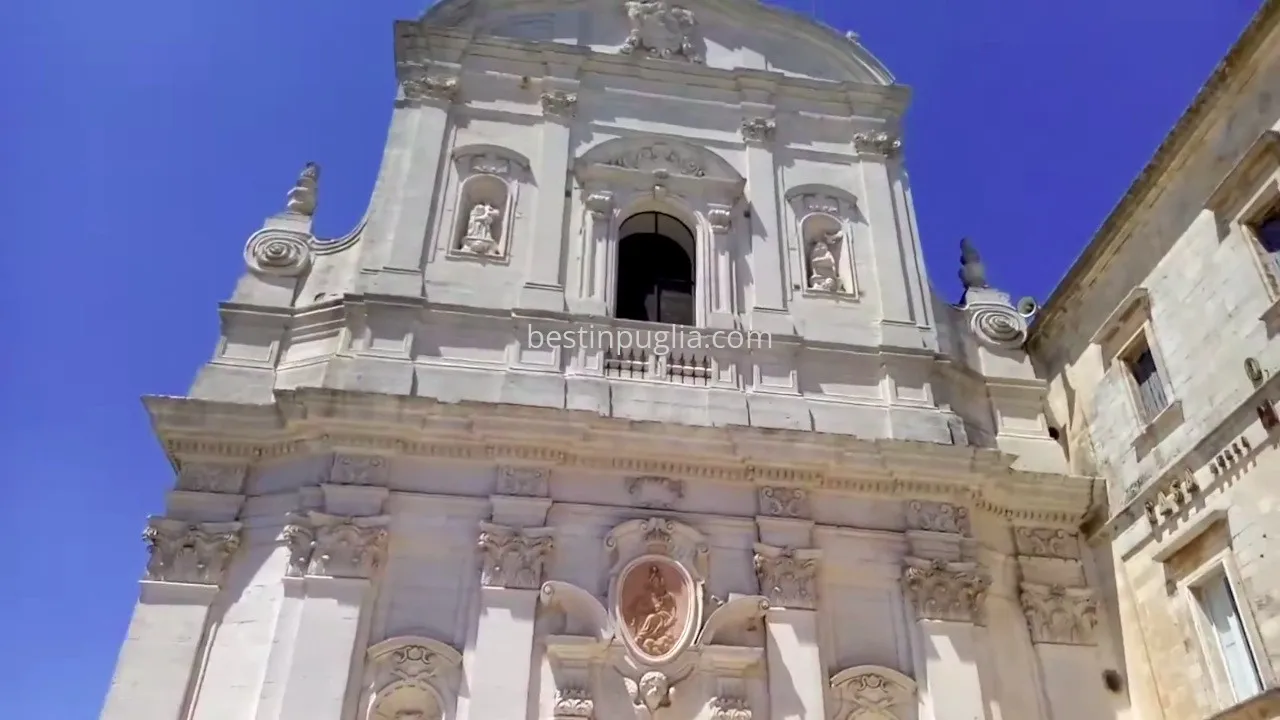
Built in the 18th century, the church is a significant example of Baroque architecture, which characterizes much of Martina Franca's artistic heritage.
Inside, the church houses valuable sacred art, including paintings and sculptures, and is particularly revered for its devotion to the Blessed Virgin of Mount Carmel, a deeply felt tradition in local Catholic worship.
The richly decorated main altar features a statue of the Madonna of Mount Carmel, the center of the faithful’s devotion. Every year, on the occasion of the feast dedicated to the Blessed Virgin of Mount Carmel, celebrated on July 16, the church becomes a focal point for processions and religious celebrations, attracting many faithful and visitors.
The Church of the Blessed Virgin of Mount Carmel in Martina Franca also houses a masterpiece of great artistic and religious value: the polychrome statue of Santa Maria della Misericordia, created by the renowned Puglian sculptor Stefano da Putignano.
Stefano da Putignano, known for his extraordinary talent in stone sculpture, was one of the most influential artists of the Renaissance in Puglia. The statue of Santa Maria della Misericordia, characterized by refined details and vibrant colors, is an example of his mastery in creating works of great expressive intensity and beauty.
This sculpture represents an essential part of the church's artistic heritage and makes it an unmissable stop for art lovers and devotees visiting Martina Franca.
Church of Sant'Antonio da Padova
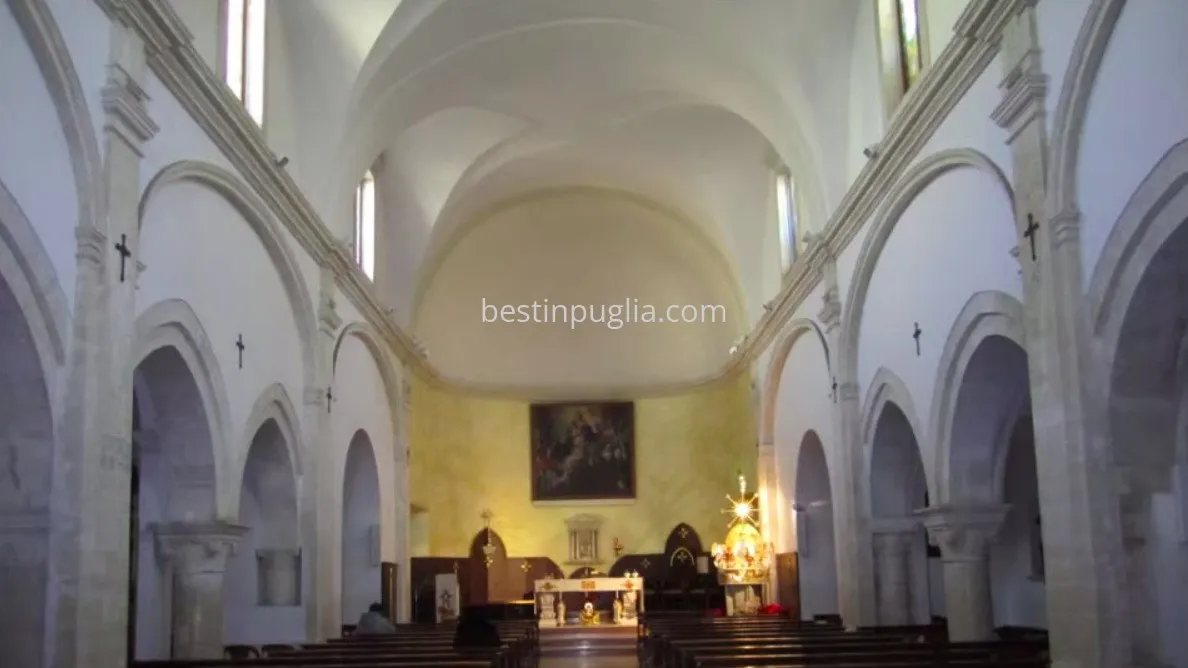
The Church of Sant'Antonio da Padova, originally dedicated to Santo Stefano, was built in the 15th century by the Observant Franciscans. Over the centuries, it has undergone several changes, including the reconstruction of the facade in a neoclassical style in 1835.
Inside the church, there are two precious sculptures created by Stefano da Putignano: one dedicated to Santo Stefano and the other dedicated to Sant'Antonio. These works of art represent an important example of Stefano da Putignano's artistry and add significant value to the church's heritage.
In the suggestive cloister of the Church of Sant'Antonio da Padova, it is also possible to admire some eighteenth-century frescoes which further enrich the atmosphere of this sacred place.
Church of San Vito
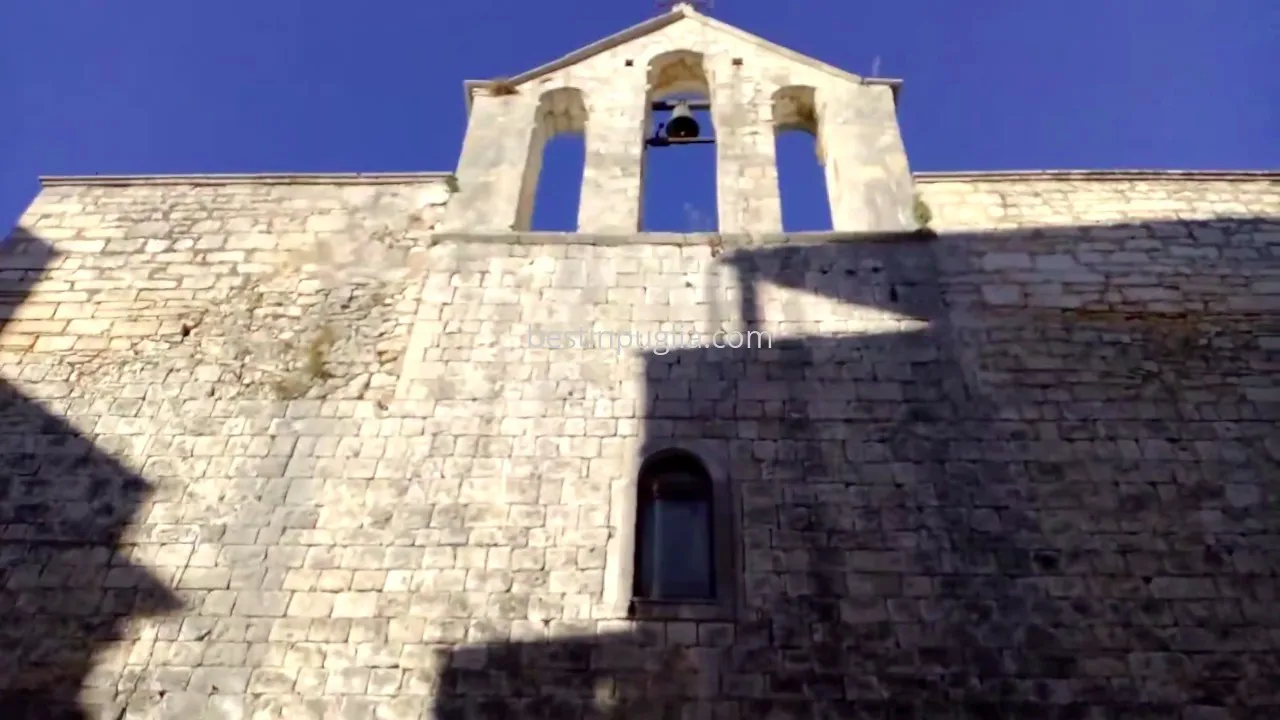
The Church of San Vito, located in the historic center between via Ignazio Ciaia and via Mazzini, is one of the oldest structures in Martina Franca. Despite the lack of a precise date, it is believed to have been built between the end of the 13th century and the beginning of the 14th century.
The imposing Church of San Vito stands out for its ashlar facade and the suggestive bell gable. Inside, one can admire a single nave that exudes an atmosphere of great spirituality.
During the 18th century, the interiors of the church were beautifully decorated in the Baroque style, giving them a sumptuous and glamorous look.
The Church of San Vito represents one of the oldest testimonies of Martina Franca. With its imposing ashlar facade, bell gable and Baroque-decorated interior, the church offers a spiritual and artistic experience of great value.
Palazzo Turnone
In addition to the Palazzo Ducale, the historic center of Martina Franca offers a wide choice of sumptuous noble palaces.
One of the buildings in the historic center of Martina Franca that attracts the attention of visitors is undoubtedly Palazzo Turnone, which currently houses the Conservatory of Santa Maria della Misericordia.
This is one of the oldest buildings in the city, dating back to the Angevin period, its majesty is an expression of the power that the homonymous Martinese family exercised over the city.
Pianelle Park Museum
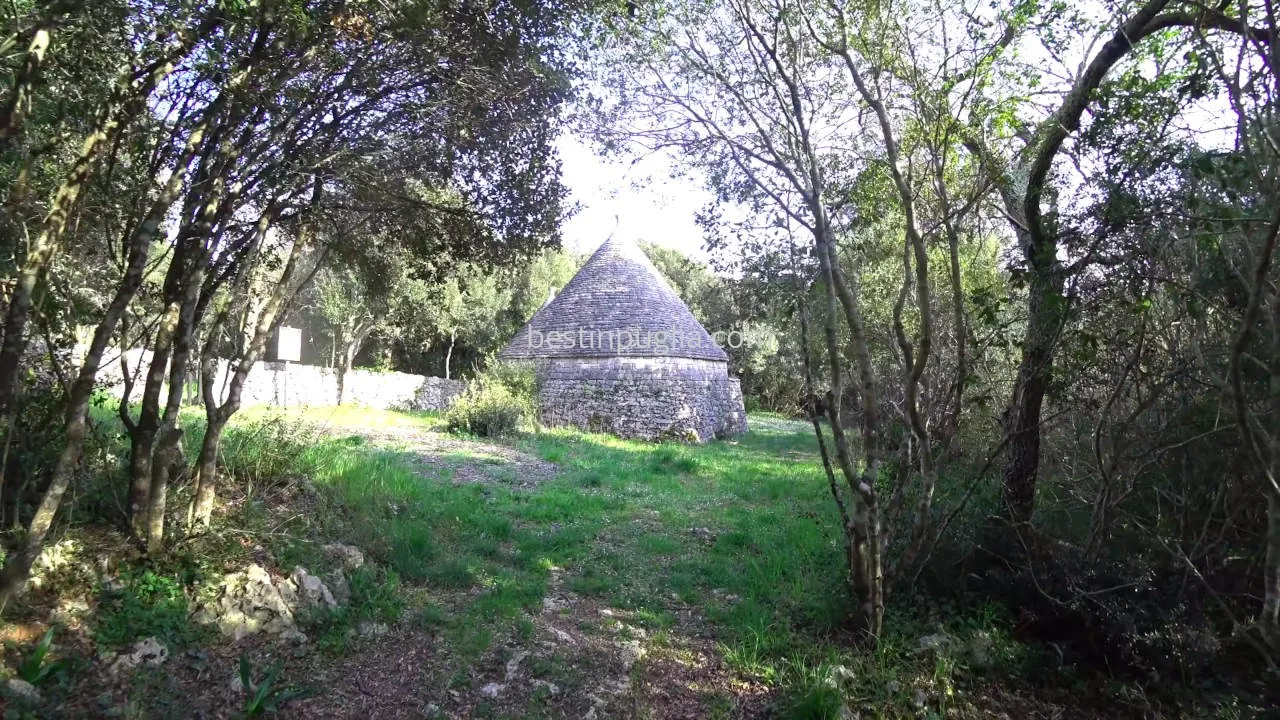
The Museo del Parco delle Pianelle in Martina Franca is housed in the suggestive 18th century Palazzo Ducale. Inside this fascinating building, it is possible to admire evidence of the rich environmental heritage of the Pianelle Natural Park. This unique park, located between Massafra, Cristiano and Martina Franca, represents a special ecosystem characterized by a typically Mediterranean flora.
The Museo delle Pianelle was established in 1999 with the aim of creating a scientific-didactic structure that would allow the public to fully appreciate and understand the wonders of the Natural Park. The museum is an important introduction to visiting the nature reserve, offering an informative and educational context for exploring the protected area.
The Museo del Parco delle Pianelle, represents a unique opportunity to immerse yourself in the natural heritage of the Pianelle Natural Park. Thanks to this scientific-educational museum, visitors can appreciate and understand the exceptional nature of this Mediterranean ecosystem.
On the second floor of the Palazzo, a modern multifunctional structure of the Museum offers an illustration of the landscape and cultural riches of the Pianelle Reserve. This exhibition space has been designed to provide a comprehensive overview of the natural and cultural wonders present in the reserve.
Museum of the Basilica of San Martino - MuBa
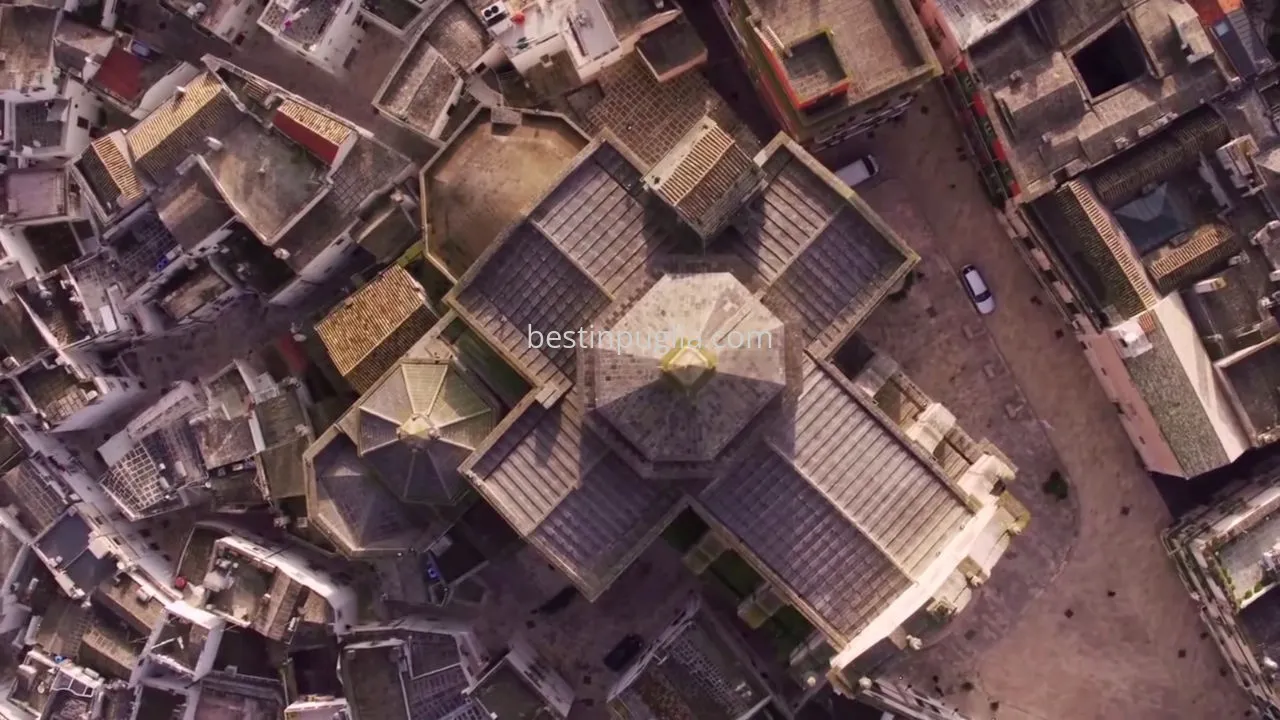
The MuBa – Museum of the Basilica of San Martino is located in the heart of Martina Franca, within the charming 18th-century Palazzo Stabile. The museum, part of the cultural insula of the Basilica, is dedicated to preserving and showcasing the city's artistic and liturgical heritage. Notable exhibits include sacred silver furnishings from the 18th century, created by Neapolitan masters, ancient documents, and liturgical vestments.
- Opening Hours:
Museum: Tue - Sun: 10:00/13:00
Basilica: Mon - Fri: 9:30/12:00 and 17:00/18:00 - Prices:
Full: €3, Reduced: €1.50, Groups: €2.50 (min. 10 people).
Free entry for children under 10, disabled persons with an accompanying person, licensed guides, and journalists.
Museum of Filippo I d'Angiò
Located in the Ducal Palace of Martina Franca, this museum is a must-see for lovers of contemporary art inspired by the local landscape, featuring works created by artists who draw inspiration from the region.
Philip I of Anjou Museum
The Ducal Palace of Martina Franca houses the second museum of the city, dedicated to Philip I of Anjou. This museum is an unmissable stop for lovers of contemporary art inspired by the Martinese area.
The Museum offers an extraordinary exhibition of contemporary works of art.
These works have been created by artists who have drawn inspiration from the Martina Franca area, making the museum a place for the discovery and appreciation of contemporary art linked to the local culture and landscape.
Cave of Monte Fellone
The municipality of Martina Franca and the surrounding area have very ancient historical origins. The territory of Martina Franca hosts the suggestive Grotta Fellone, whose historical importance is testified by the finds discovered during excavation campaigns in the 60s. This cave was inhabited by man in the Middle Neolithic and sporadically in the Bronze Age.
Excavations have revealed that the ancient inhabitants of Grotta Fellone were involved in horse breeding, a rather unusual aspect in southern Italy and practically unique in Puglia.
Another important element in the area are the mirrors, among which the famous Specchia Tarantina stands out. These mirrors, present in the area, were used in the past to delimit and protect the borders between the Messapian and Taranto peoples.
Municipal Villa
Especially in the summer period it is very pleasant to cross the municipal park of Martina Franca, getting lost along the shaded paths embellished by the marble fountains.
The indisputable neoclassical taste of the constraints gives the villa an idyllic atmosphere and offers the visitor a pleasant sensation of detachment from the more chaotic and busy streets of the centre.
Craft Traditions of Martina Franca
Martina Franca is famous not only for its baroque architecture and the charm of its historic center, but also for its deep-rooted craft traditions, particularly linked to the production of ceramics and local limestone.
These traditions are not just artistic expressions, but represent a vital connection to the history, culture, and identity of the local community, passed down from generation to generation.
The craftsmanship of ceramics and limestone in Martina Franca is much more than a technical skill; it represents a profound connection with the land and its history.
Indeed, Puglia has always had a close relationship with its land and natural resources, and these craft traditions reflect a way of living in harmony with the surrounding environment.
Ceramic Craftsmanship
The tradition of ceramics in Martina Franca has ancient origins, dating back centuries when local communities used the clay available in the region to produce everyday utensils, such as plates, jugs, and pots for storing food and water.
The ease of obtaining these raw materials, combined with the skill of artisans in shaping them, favored the development of a tradition that has evolved over time.
Today's ceramic workshops reflect this heritage. Here, you can find handmade items, often decorated with traditional Apulian motifs like olive leaves, flowers, and stylized figures.
Each piece is unique and represents the artisanal mastery deeply rooted in the region. Many local artisans pass down their techniques from generation to generation, enriching their knowledge with a touch of modernity while maintaining traditional methods.
The crafting of ceramics is a form of cultural expression that preserves the identity of the region and its connection to the past.
Sculptors and Limestone
The crafting of limestone, particularly the Lecce stone and Trani stone, also has a millennia-old history.
Puglia has always been rich in deposits of this stone, which was used as far back as Roman and medieval times for the construction of buildings, temples, and monumental works.
The ease of working with the material, its durability, and natural beauty have made limestone the preferred material for local constructions.
In Martina Franca, this tradition has been kept alive over the centuries. Local sculptors still use limestone to create a wide range of artifacts, from architectural elements such as columns, frames, and portals to decorative sculptures.
The mastery of local sculptors is the result of knowledge passed down over time, blending with contemporary art to create works that celebrate both tradition and innovation.
Visiting Craft Workshops: A Journey Through History
Visiting ceramic workshops and sculpture studios in Martina Franca allows you to connect with this cultural heritage. Not only can you observe artisans at work, but you can also understand the creative process behind the production of ceramics and stone sculptures. These places represent a true journey through time, where you can witness the fusion of centuries-old traditions and modern innovation.
Many workshops are located in the picturesque alleys of the historic center, creating a charming atmosphere where past and present meet. Artisans often welcome visitors to show their work, making it possible to purchase unique pieces that become true symbols of the history and art of Martina Franca.
Events in Martina Franca
Many events are held in Martina Franca during the year, some of international importance that take place every year.
Among the types of events organized in Martina Franca it is possible to participate in cultural events, religious events, traditional and folk festivals.
Fairs, festivals or markets are also periodically held to enliven the streets of Martina Franca with visitors from all over the world.
The most important events held in Martina Franca are:
- Itria Valley Festival
- Fair of San Martino
- The Nine Lamps
- Quarantine
- Sao Paulo Fair
- Christmas in Martina Franca
What to do nearby
Itria Valley Festival
The Valle d'Itria Festival is held every year in Martina Franca from July to August and is dedicated to opera, chamber music and ballet. The festival presents high-level shows with international artists in the evocative setting of the Palazzo Ducale or in the countryside farmhouses in the Itria Valley.
The Itria Valley Festival, established in 1774 thanks to the contribution of Paolo Grassi, founder of the small theater in Milan, superintendent of the staircase and president of Rai, had the aim of creating an original musical event in his hometown.
Since its first edition, the Festival has been distinctly characterized by the search for new ways in the expression of Italian melodrama in its bel canto style, recalling the period from Monteverdi to the early nineteenth century.
Fair of San Martino
San Martino, patron saint of Martina Franca, is celebrated every year with a religious event of great importance which is accompanied by the grandiose Fiera di San Martino.
During this fiesta, the city comes alive with processions, cultural events, musical performances and fireworks, creating an atmosphere of joy and fun.
The Fiera di San Martino, established in 1609 by the duke of Martina Giambattista II di Caracciolo on the occasion of his first official visit to the city, originally extended for nine days, from 11 to 19 November.
Over time, it has become the most important fair in the Murgia area and, although it is now limited to just one day, it continues to be a highly anticipated and attended event.
The Nine Lamps
The Nine Lamps event is an important celebration in Martina Franca, which takes place from December 16th to 24th, offering an enchanting and engaging atmosphere.
At dawn, while the city is immersed in sleep, the devotees set out on their way to the church of San Domenico in the charming historic center, despite the rain or snow, to participate in the solemn mass in honor of the Child Jesus. Each day during this nine-day period, a new lamp was lit, leading up to Christmas Eve.
Even today, just like in the past, the faithful gather in the same church at six in the morning for nine consecutive days, preserving this ancient tradition. Through Christmas carols, they recall the joyful birth of Jesus, keeping alive the magical atmosphere of this festivity.
Quarantine
"A Quaranten" is a characteristic puppet dressed as an old woman who carries on a long-standing tradition during Lent in Martina Franca.
In the past, during this period of penance, the residents of Martina Franca used to hang a puppet called "a quaranten" along each street. This puppet, dressed as an old woman, was accompanied by an orange, six cutters (typical round dry bread) and a bottle of wine. This setup served as a constant reminder of the withdrawal period one was going through.
The "quarantine" puppet remained hung until ten o'clock on Holy Saturday, when it was shot down by some men and then burned. This ceremony marks the end of the bond of abstinence.
The tradition is still perpetuated today, with the burning of the "quarantine" which takes place in a small square in the historic center. It is a significant moment that allows us to preserve the legacy of this ancient practice and pay homage to local traditions.
Sao Paulo Fair
On June 29, the fair of San Paolo is held, in honor of the patron saint of shoemakers. During this fair, handcrafted footwear exhibitions, traditional music and dance performances, stalls and visitor attractions take place.
Christmas in Martina Franca
During the Christmas season, the city lights up with festive lights and a Christmas market is organised. There are plays, concerts, live nativity scenes and other Christmas-related activities.
For more specific information on past events, I suggest you consult local sources or websites dedicated to promoting tourism in the city.
Itria Valley Festival in Martina Franca
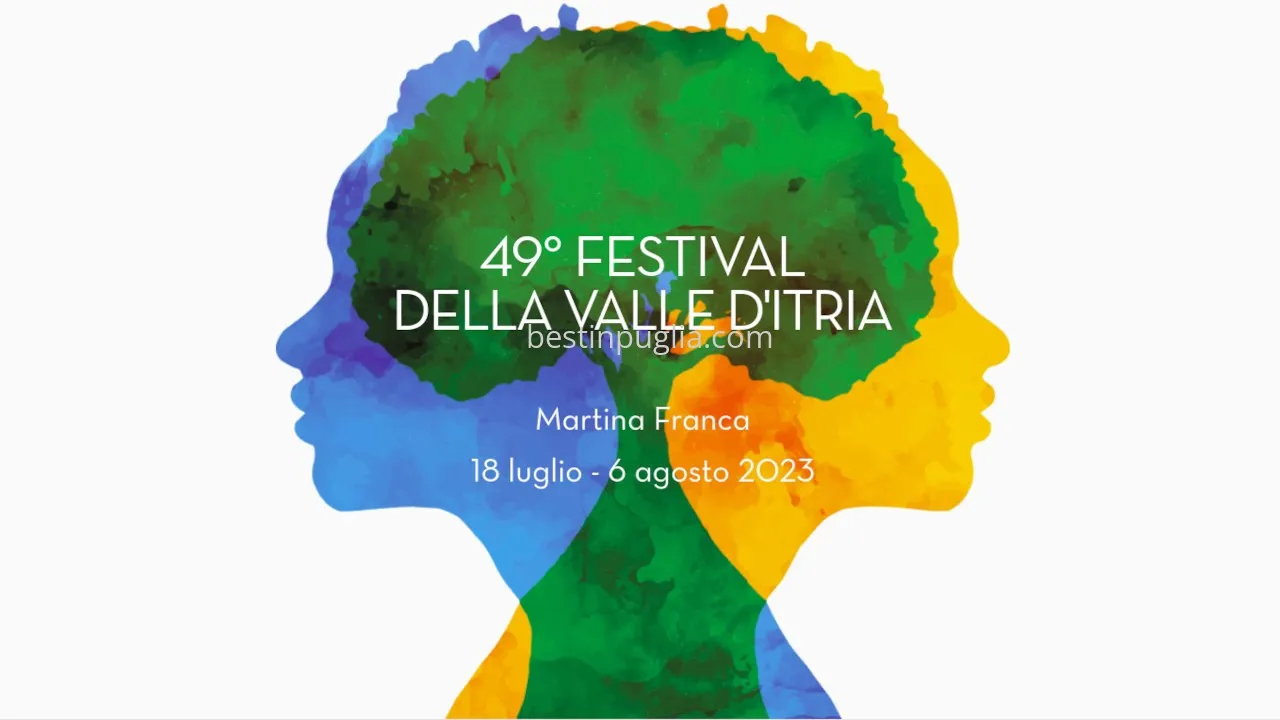
The Valle d'Itria festival is the most important Opera and classical music event in the Puglia region. Every summer, in Martina Franca, a series of spectacular concerts takes place for more than a month. The enchanting places of the city or the suggestive palaces, as well as the characteristic surrounding countryside and farms, are the setting for this extraordinary festival.
In 1974, the festival came to life as a laboratory, but today it is much more. An immersive experience that combines audience, content and environment. To fully understand it, one must experience the whole event and listen to the music in buildings full of history and meaning.
Where the Valle d'Itria Festival takes place
At the Valle d'Itria Festival, the historic buildings of Martina Franca are transformed into fascinating outdoor spaces, rather than showing off their sumptuous halls. This choice, together with the start time of the performances, usually after 21:00, is motivated by the high summer temperatures, often over 30 degrees Celsius.
The heart of the Festival is the vast courtyard of the Palazzo Ducale, currently used as the town hall. Seating nearly a thousand, it offers a wide and tall stage, though not particularly deep. This is where the big productions come to life, while during the intermission the public hastily makes their way to the bars of the square, challenging the late tourists and locals strolling the streets. The busiest hours are after ten.
For some representations evocative 18th century country villas, Masserie, located a short distance from the town are used. These locations proved to be the ideal setting for the Opera, thanks to the ancient walls and large courtyards steeped in history.
From the center of Martina Franca, in a few minutes you are immersed in a singularly disordered agricultural landscape, with its ancient olive groves enclosed by characteristic dry-stone walls and the fascinating stone shelters called Trulli (many of which have been transformed into picturesque, although sometimes uncomfortable, dwellings ). The multiple conical domes of the Trulli evoke the image of a community that gathers within them.
The anticipation for opera festivals in Italy is often associated with grandeur: big egos, famous names, jeweled audiences and settings worthy of a Visconti film, perhaps with a Roman amphitheater in a tourist area. However, the Valle d'Itria Festival does not try to meet these expectations.
Repertoire of the Valle d'Itria Festival
The festival's repertoire focuses on rare works from the bel canto period, ranging from Monteverdi to Bellini. Over the years, more and more importance has been attached to authentic period performance, especially from a musical point of view.
In the production, the directors bring a touch of freshness to the works by involving the most daring Italian theater teams. This is due to the fact that many of the plays performed have not been staged for a long time and deserve a revival that makes them exciting and enthralling.
The Opera's renewal experiment also involves the singers who participate in it. Among them we find experienced professionals, such as Carmela Remigio, an established protagonist of Italian opera houses for over a quarter of a century, but also many young emerging talents who take advantage of the opportunity to gain experience in the field.
In Martina Franca, an Accademia del Bel Canto is held parallel to the festival, which is responsible for providing numerous minor and substitute roles. Participants of the academy also offer a series of evening concerts, known as "sorbet concerts", during which the audience is treated to a free sorbet at the end of the performance.
Food and Wine: Traditions and Flavors in Martina Franca
Martina Franca is famous for its local cuisine, which offers original and intense flavors despite the simplicity of its dishes, and for its renowned "Capocollo di Martina Franca." This specialty is made from high-quality pigs raised in the Valle d'Itria and undergoes a slow marination in cooked wine.
The area is known for the excellent quality of its meat and for the delicious “bombette,” which are well-prepared, cooked, and served on an open grill by butcher shops and restaurants.
Bombette are meat rolls made from slices of pork capocollo, stuffed with Canestrato (a typical Puglian cheese), seasoned with salt and pepper.
In Martina Franca, tourists can savor these flavors thanks to the exceptional skills of local butchers, one of whom is a world champion of the Italian Butchers' National Team.
What to See Near Martina Franca
In the surroundings of Martina Franca, in the stunning Valle d'Itria, there are many places to visit that offer charming landscapes, historic towns, and unique natural attractions. Here’s an overview of the main nearby destinations:
Locorotondo
Locorotondo is one of the most beautiful villages in Italy and is just a few kilometers from Martina Franca. Its name means "round place," referring to the circular shape of its historic center, characterized by whitewashed houses and narrow, cobbled streets.
It’s famous for its locally produced white wine and the splendid panoramic views of the Valle d'Itria. A stroll through Locorotondo is like stepping into the peaceful and picturesque Puglian landscape.
Fasano
Fasano, located a bit north of Martina Franca, is an interesting city both for its historic center and nearby attractions. One of the main sites is the Archaeological Park of Egnazia, which preserves the ruins of an ancient Messapian and Roman city.
Additionally, Fasano is famous for the ZooSafari, one of the largest wildlife parks in Europe, housing many exotic animal species in semi-liberty. The city also has a lovely coastline with seaside resorts like Torre Canne.
Alberobello
Alberobello, a UNESCO World Heritage site, is a must-see. This town is famous for its trulli, traditional stone houses with conical roofs. Walking through the Rione Monti and Rione Aia Piccola neighborhoods, you can admire hundreds of trulli, many of which are still inhabited or used as shops and museums.
The unique landscape of Alberobello, with its characteristic structures, is one of the symbols of Puglia worldwide.
Bosco delle Pianelle Nature Reserve
The Bosco delle Pianelle Nature Reserve, located a few kilometers from Martina Franca, is a protected area covering about 600 hectares.
This forest is an example of Mediterranean woodland and hosts a great variety of flora and fauna, with well-marked trails perfect for walking, hiking, or cycling. It’s a perfect spot for immersing oneself in nature and enjoying the tranquility, perhaps having a picnic or exploring the karst caves within the reserve.
The Trulli in the Valle d'Itria
The Valle d'Itria is famous for its trulli, typical structures scattered throughout the landscape.
These stone buildings, characterized by their conical roofs, were originally used as homes or agricultural storage. Besides those in Alberobello, many trulli are still inhabited in the countryside around Martina Franca, Locorotondo, and Cisternino.
The Valle d'Itria, with its cultivated fields, olive groves, and vineyards, dotted with trulli and farmhouses, offers a unique and authentic landscape to explore.
Frazione di San Paolo
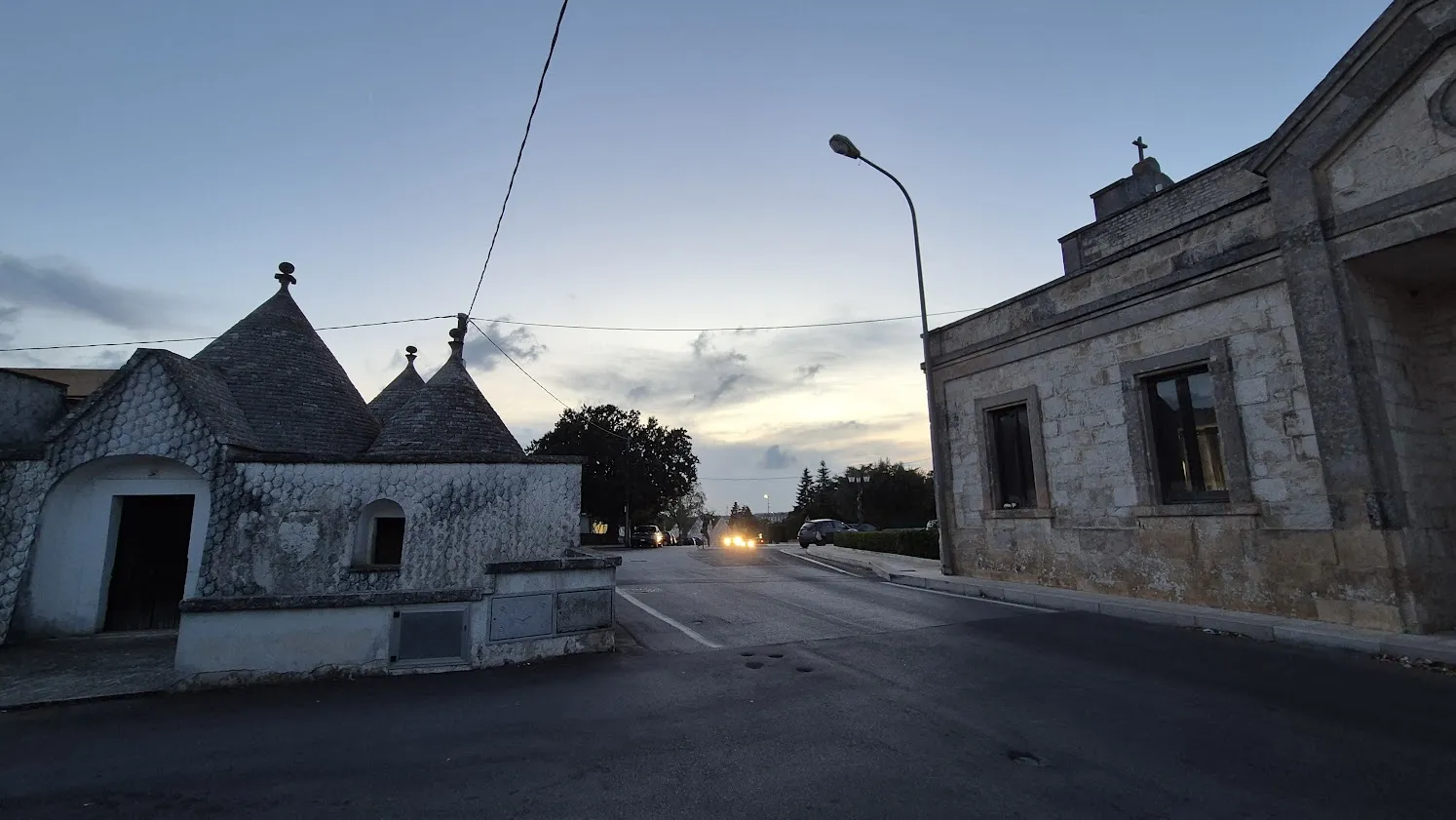
The Frazione di San Paolo is a small rural village located near Martina Franca, nestled in the peaceful Puglian countryside. Here, among traditional farmhouses and trulli, a quiet and authentic atmosphere can be found. San Paolo is also known for its rural churches, which provide examples of local religious architecture.
The name of the district comes from the Church of St. Paul the Apostle, a simple yet beautiful building typical of rural Puglian churches. The church, with its sober and linear facade, is an important point of reference for the local community. Inside, one can find essential decorations and devotional symbols dedicated to St. Paul.

The church overlooks a small square with convenient parking, which becomes the heart of the district during the celebrations in honor of St. Paul, held annually on June 29. These festivities, which include religious ceremonies and community gatherings, are a special occasion for both locals and visitors.
The area is perfect for those seeking peace and relaxation, far from the hustle and bustle of the cities, offering an immersion in the serenity of the Puglian countryside and the genuine spirituality of its community.
Bosco Orimini
The Bosco Orimini is located in the heart of the Valle d'Itria, near Martina Franca, in the province of Taranto, Puglia. It is situated just a few kilometers from the town, towards the southwestern area of the municipality, along the road connecting Martina Franca with other towns in the valley, such as Locorotondo and Cisternino.
This location makes Bosco Orimini easily accessible both for those staying in Martina Franca and for those visiting other areas of the Valle d'Itria.
The Bosco Orimini is a picturesque wooded area characterized by towering holm oaks, which represents one of the natural treasures of the Valle d'Itria. With its lush and unspoiled vegetation, this forest offers a unique environment for those who want to immerse themselves in nature and discover the beauty of the Puglian landscape.
The Bosco Orimini is ideal for hiking and walking enthusiasts, thanks to its trails winding through ancient trees and a varied local fauna. This place is a true green lung of the region, where you can rejuvenate and admire the biodiversity that characterizes the area.
